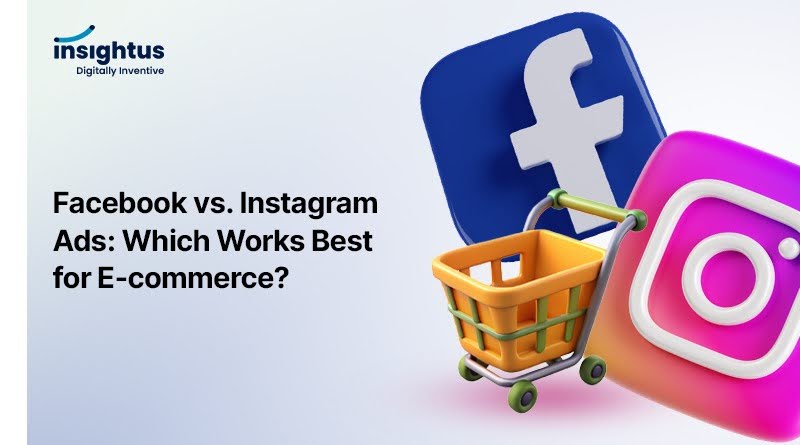
If you’re running an e-commerce store in 2025, there’s one question that keeps coming up:
“Should I invest more in Facebook Ads or Instagram Ads?”
Here’s the truth: Both work but they work differently.
This blog breaks down the 7 most important differences between Facebook and Instagram Ads based on real data, recent trends, and what we see working for e-commerce brands right now.
By the end, you’ll know which platform deserves more of your ad budget and how to get better results without spending more.
1. Audience Age & Behavior: Where Your Buyers Actually Spend Time

Different age groups use these platforms for different reasons.
- Used more by people aged 30–55+
- Popular in Tier 2 and Tier 3 cities
- Family-focused and information-heavy browsing
- Dominated by users aged 18–34
- Visual, trend-driven, fast-moving
- Perfect for impulse buyers and D2C brands
Data Insight: 68% of buyers under 35 discover products on Instagram (Statista, 2025).
If your product targets young, style-conscious buyers Instagram wins. If you sell functional, family, or trust-based products Facebook performs better.
At Insightus Digital, we help you find where your actual customers hang out so you stop spending on the wrong crowd. We build full Meta Ads strategies that align with buyer behavior.
2. Ad Formats That Convert in 2025: What Works Where
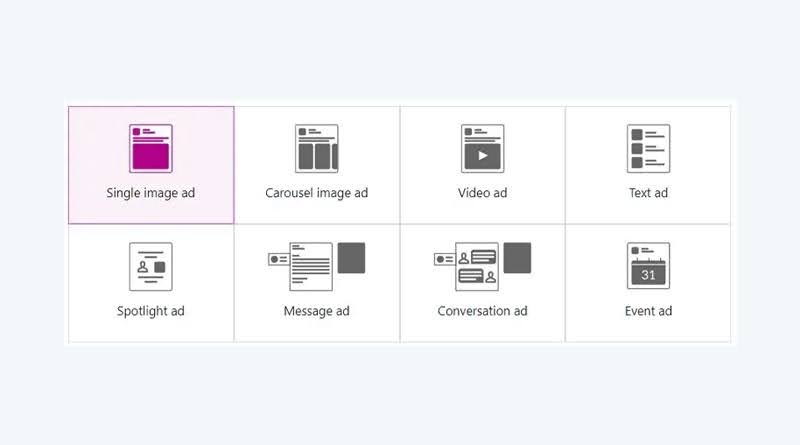
Each platform pushes different types of content. That matters for ad performance.
Facebook Ads
- Carousel ads
- Instant Experience (mini landing pages)
- Collection ads
- Feed video posts
Instagram Ads
- Reels (short videos)
- Stories with product tags
- Explore feed ads
- Shoppable in-feed posts
Recent trend: Reels ads on Instagram are driving 25% higher click-through rates (CTR) for fashion and beauty brands (Meta Ads Data, Q1 2025).
Our creative team builds ad formats that feel native not forced so people engage and buy faster. We test these across e-commerce campaigns to improve both CTR and conversions.
3. ROAS, CTR & CPM: Latest Platform Performance Comparison
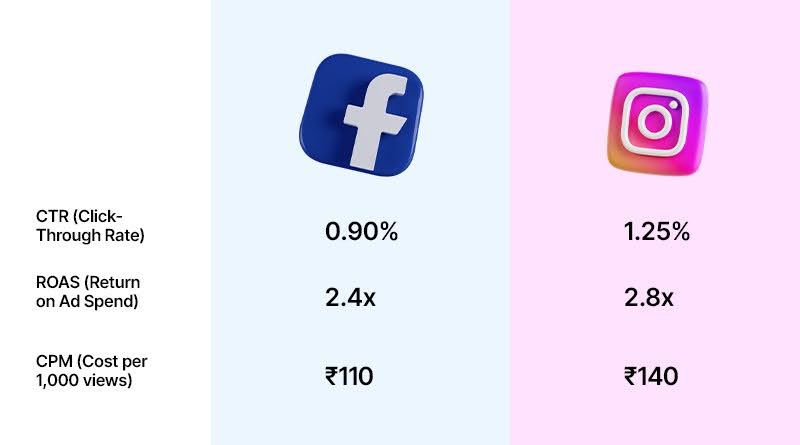
Here’s what e-commerce advertisers are seeing in 2025:
| Metric | ||
| CTR (Click-Through Rate) | 0.90% | 1.25% |
| ROAS (Return on Ad Spend) | 2.4x | 2.8x |
| CPM (Cost per 1,000 views) | ₹110 | ₹140 |
Summary: Instagram drives more clicks and better ROAS for low-ticket, visually appealing products. Facebook performs better for high-ticket, informative, or repeat-purchase products.
We start small, test both, and shift budget based on real results. It’s how we keep your Meta Ads strategy lean and effective.
4. Product Fit: Which Platform Matches Your Offer?
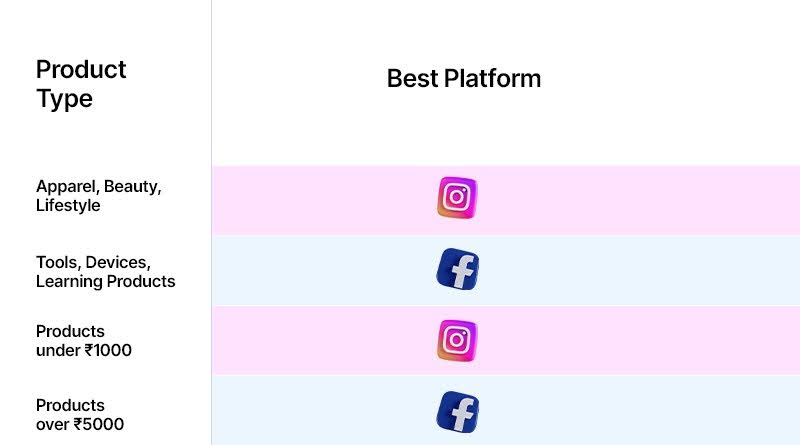
Not all products belong on the same platform.
| Product Type | Best Platform |
| Apparel, Beauty, Lifestyle | |
| Tools, Devices, Learning Products | |
| Products under ₹1000 | Instagram (impulse buys) |
| Products over ₹5000 | Facebook (considered purchases) |
Tip: If your product is visual and scroll-stopping go Instagram. If it solves a problem and needs more explanation go to Facebook.
We help e-commerce brands align their product with platform behavior to reduce wasted impressions and boost customer acquisition.
5. Retargeting: Converting Window Shoppers into Buyers

Most people don’t buy on the first click. That’s where smart remarketing helps.
Facebook Retargeting
- Works well with testimonials, discounts, and carousels
- Better for audiences 30+ who need time to decide
Instagram Retargeting
- Reels and Stories with urgency messaging work best
- Great for younger shoppers who scroll fast but act fast
Strategy we use: Awareness on Instagram Retargeting and conversions on Facebook
We don’t let warm leads go cold. Our Meta Ads strategies build full-funnel campaigns that recover abandoned carts and turn clicks into conversions.
6. Algorithms in Action: Why Content Style Matters
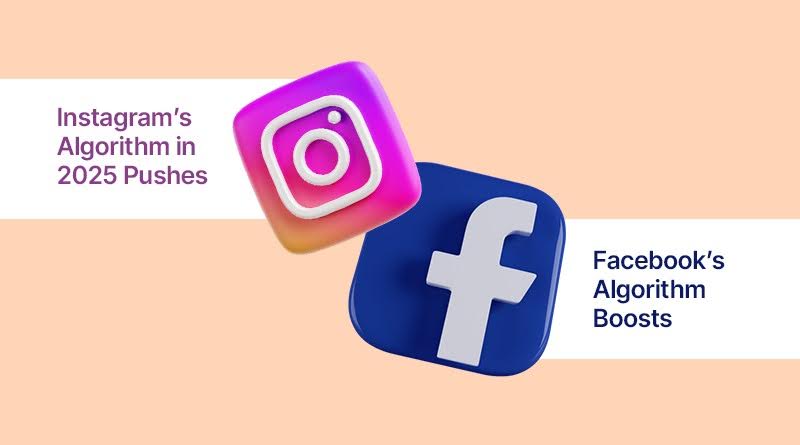
The platform decides what gets seen. And what gets seen, gets clicked.
Instagram’s Algorithm in 2025 Pushes:
- Reels over static images
- High engagement over ad budget
- Fresh, fast-moving content
Facebook’s Algorithm Boosts:
- Meaningful comments
- Post shares and group activity
- Longer watch times
Tip: Use the same campaign idea, but change the format to suit each platform. Example: Use a Reel on Instagram and a carousel on Facebook.
We adapt your content style to each platform’s rules so you don’t fight the algorithm, you ride it. This improves both CTR and ROAS.
7. Real Example: What Happened When We Ran the Same Ad on Both

A D2C skincare brand came to us with one question: “Should we spend on Facebook or Instagram?”
We ran the same offer with the same video on both.
10-Day Result:
- Instagram Reels: 3.1x ROAS, 58% new customers
- Facebook: 2.3x ROAS, 42% repeat purchases from remarketing
Final Budget Split:
- 60% to Instagram (top funnel)
- 40% to Facebook (bottom funnel)
This is the kind of data-driven Meta Ads strategy we apply for every client so decisions are based on proof, not guesswork.
Final Verdict: Don’t Pick One. Pick the Right Strategy.
The better question isn’t “Facebook or Instagram?” It’s: “Where should I use each platform in my funnel?”
Best approach for 2025:
- Instagram to attract new buyers
- Facebook to close the sale and bring them back
You don’t need to spend more. You just need to spend smarter.
At Insightus Digital, we help e-commerce brands turn Meta Ads into steady sales. From targeting to creative, testing to scaling we manage it all.

